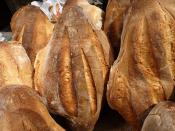Running Head: Week 7
Pain Assessment Tool for Postoperative Pain
[Writer Name]
[Institute Name]âÂÂ
�
Pain Assessment Tool for Postoperative Pain
Introduction
This is based on the measurement of the six pain-related variables: pain, anxiety, verbal statements on the degree of pain, skeletal muscle response, respiration and the amount of sweat. Although the authors claim that the reliability is satisfactory, the correlation values were not provided. However, to construct validity was assessed with coefficients of correlation between 0.44 and 0.71 for the six variables. The scale was changed 3 years later, Chambers and Price (1967) and 7 years after Bruegel (1971).
Discussion
In the components of pain assessment remains a popular choice among today's researchers. Tools include Crying required to maintain oxygen saturation of more than 95% increase in vital signs, expression, sleeplessness (CRIeS), developed by Krechel and Bildner (1995) and 'COMFORT' scale developed by Van Dyck and others. (2001).
In the latter study (204 infants aged 0-3 years admitted to the major / Thoracic Surgery), the scale used in conjunction with the variability of the patient's heart rate and mean arterial pressure. An attempt was made to predict the level of association between the three measures, and this showed that the physiological indices significantly correlated with the comfort of 'behavior' scores.
It was concluded that behavioral and physiological indicators, usually interconnected in a very painful situation and can confirm the diagnosis of pain. Finally, Koho et al. (2001) and watched videos of patients with chronic back pain (N = 51), as they passed a series of physical problems, in which the VAS was used as an additional assessment tool to measure the pain experience.
Some authors argue that more is not a one-dimensional and, therefore, difficult to translate subjective feelings directly (Gift 1989, Flaherty 1996, Katz and Melzack 1999).


